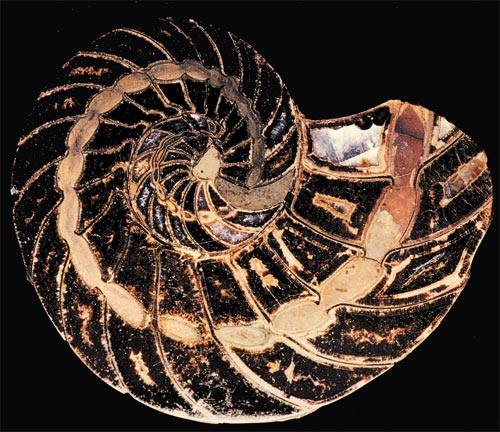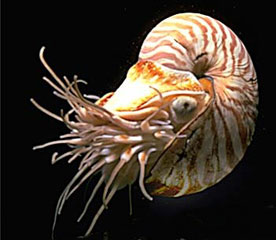Gearboxes and Jet Engines in Nature
Just about everyone interested in motor vehicles knows the importance of gearboxes and jet engines. Few, however, are aware that there are gearboxes and jet engines in nature, which possess designs far superior to those employed by man.
Gearboxes allow you to change gears in the vehicle so that the motor is used most efficiently. Natural gearboxes work along the same principles as those in cars. Flies, for example, use a natural gearbox that provides three-speed gearshift connected to its wings. Thanks to this system, a fly can instantaneously accelerate or slow down by flapping its wings at the desired speed while in the air.47
In cars, at least four gears are used to transmit the power from the engine to the wheels. It is possible to drive smoothly only when the gears are used in succession, from low gear to high, and back again. Instead of gears in cars, which are heavy and take up a lot of room, flies have a mechanism that takes up only a few cubic millimeters. Thanks to their far more functional mechanism, flies can beat their wings with ease.
 |
A jet engine takes in air from one end and expels it from the other at a much greater speed. The jet engines in vertical take-off aircraft like the Harrier have nozzles to direct the exhaust down. Thanks to this system, the Harrier can land and take off vertically. After takeoff, the nozzles are pointed backwards, so that the aircraft flies forwards.
|
|
The squid use a form of propulsion system similar to jet planes. A squid's body contains two open spaces like pockets. Water taken in from them is drawn into a powerful elastic bag of contracting muscles. In this bag is a backward-pointing nozzle. The muscles contract, expelling water out of that nozzle at high speed. The animal can reach speeds of up to 32 km (20 miles)an hour to flee predators, sometimes even leaping out of the water and onto the decks of ships. (Phil Gates, Wild Technology, 38.)
|
 |
The squid, octopus and nautilus employ a propellant force similar to the principle used by jet engines. To understand just how effective this force is, consider that the species of squid known as Loligo vulgaris can travel in the water at speeds up to 32 kilometers [20 miles] an hour.48
The nautilus, an incomparable example in this regard, resembles an octopus and may be compared to a ship with a jet engine. It takes water in through a tube beneath its head and then shoots the water out. While the water travels in one direction, the nautilus is propelled in the other.
Another feature makes scientists envious of these creatures: Their natural jet engines remain impervious to the high pressure of the deep sea. Moreover, the systems that let them move are both silent and extremely light. In fact, the nautilus' superior design served as a model for submarines.
 |
 |
|
Left: When threatened by a starfish, the scallop suddenly closes the two halves of its shell. It thus expels a quantity of water in such a way as to set up jet propulsion and forces itself forward.
Right: Known by its scientific name of Ecballium elaterium, the squirting cucumber disperses its fruit’s seeds in a sudden explosion. As the fruit ripens, it fills with a slimy juice, which gradually creates pressure. Through the buildup of internal pressure, it then propels its seeds with an initial velocity of 56 km (35 miles) per hour. (Helmut Tributsch, How Life Learned to Live, Cambridge: MITPress, 1982, 59.)
|
100-Million-Year-Old Technology Under the Sea
 |
|
Nautilus
|
When a submarine fills its ballast tanks with water, the ship becomes heavier than water and sinks toward the bottom. If water in the tanks is emptied out by means of compressed air, then the submarine surfaces. The nautilus employs the same technique. In its body there is a 19-cm (7.48 in) spiral organ rather like a snail's shell, inside which are 38 interconnected "diving" chambers. To empty out the water; it also needs compressed air—but where does the nautilus find the air it needs?
By biochemical means, the nautilus produces a special gas in its body and transfers this gas to the chambers, expelling water from them to regulate its buoyancy. This allows the nautilus to dive or surface when hunting or chased by predators.
A submarine can only venture safely to a depth of about 400 meters (1,310 feet), whereas the nautilus can easily descend to a depth of 450 meters (1,500 feet).49
Such a depth is very dangerous to many living things. But despite this, the nautilus remains unaffected, its shell is not crushed by the pressure and its body suffers no harm.
 |
|
1. A Submarine on the Surface
2. A Submarine under Water
3. Tanks filled with Water
|
|
In order to dive or surface, submarines employ special compartments that serve the same purpose as those in the nautilus. When these compartments (tanks) are filled with air, the submarine floats. When the air is replaced with water, it sinks. The number of tanks that are filled with water determines the underwater depth at which the submarine runs.
|
Another very important point needs to be considered here. The nautilus has possessed this system, which can withstand the pressure at some 450 meters, since the day it was created. How can it have designed this special structure all by itself? On its own, could the nautilus have developed the gas to obtain the necessary compressed air to empty out the water in its shell? It is definitely impossible for the creature to know how to create the chemical reaction to produce gas, much less build the structures in its body necessary to bring that chemical reaction about, nor to structure a shell capable of withstanding tons of water pressure.
This superior design is the work of God, Who flawlessly created everything, with no prior models. God's title of al-Badi' (the Innovative Creator), is revealed in the Qur'an:
He is the Originator of the heavens and the Earth ...
(Qur'an, 6: 101)
 |
|
Submarines’ diving techniques resemble those of fish, which are able to control their relative density in order to rise or dive in the water. In their bodies, bony fish have a swim bladder that gives them their buoyancy. When air is added to the swim bladder, by diffusion through the blood vessels in the bladder walls, the fish becomes less dense overall;when air is removed the fish becomes more dense. By changing the volume of air in the bladder, the fish’s density can be made equal to that of the surrounding water at a given depth.
|
 |
|
The depth of a submarine in water is adjusted by special command systems, the product of human intelligence, after many years of engineering research. No rational person can claim that these devices came about by chance.
Evolutionists, however, make the unrealistic claim that although the nautilus can do exactly what a submarine does, it is actually the product of blind chance.
|
 |
 |
|
This 100-million-year-old nautilus fossil is proof that the animal never underwent evolution. God created the creature in an instant, and with all its flawless design.
|
|










